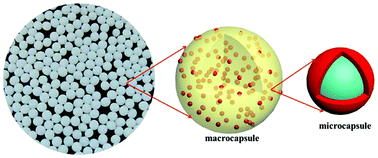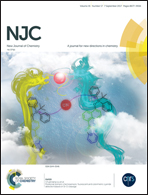Effects of oil-soluble etherified melamine-formaldehyde prepolymers on in situ microencapsulation and macroencapsulation of n-dodecanol
Abstract
Microencapsulated and macroencapsulated n-dodecanol as a phase change material was fabricated using an oil-soluble melamine-formaldehyde prepolymer etherified by methanol and butanol through in situ polymerization. The surface morphology, microstructure, antiosmosis performance, mechanical properties, phase change behavior and thermal stability were systematically characterized and discussed. FTIR analysis revealed the chemical compositions of the microcapsules and primarily ascertained that n-dodecanol was encapsulated within an etherified melamine-formaldehyde resin shell. These microcapsules (mainly ranging from 1 μm to 6 μm) with well-defined core–shell structures were observed by FE-SEM and TEM. The ratio of methanol etherified melamine-formaldehyde (MMF) to butanol etherified melamine-formaldehyde (BMF) prepolymers had a great influence on their surface morphology, antiosmosis performance and mechanical properties. The as-prepared microcapsules also presented high heat storage capability and good thermal stability which could be demonstrated by DSC and TG. In addition, narrow-disperse macrocapsules containing self-assembled MMF resin microcapsules were fabricated through the piercing–solidifying method with sodium alginate as a matrix. The double-encapsulated structure was also investigated by FE-SEM combined EDS analysis, and its thermal stability was enhanced to some extent when compared with that without MMF shell encapsulation.



 Please wait while we load your content...
Please wait while we load your content...